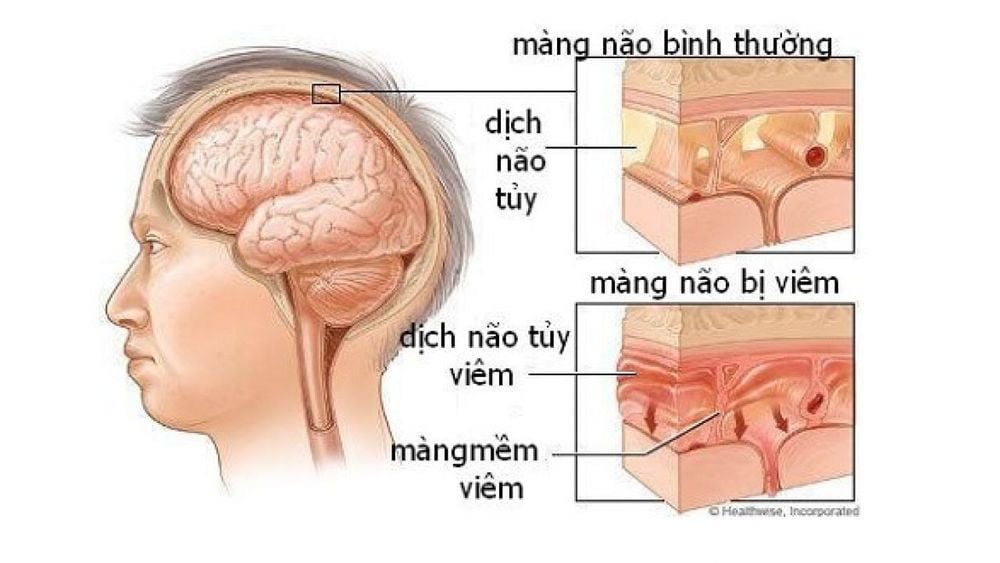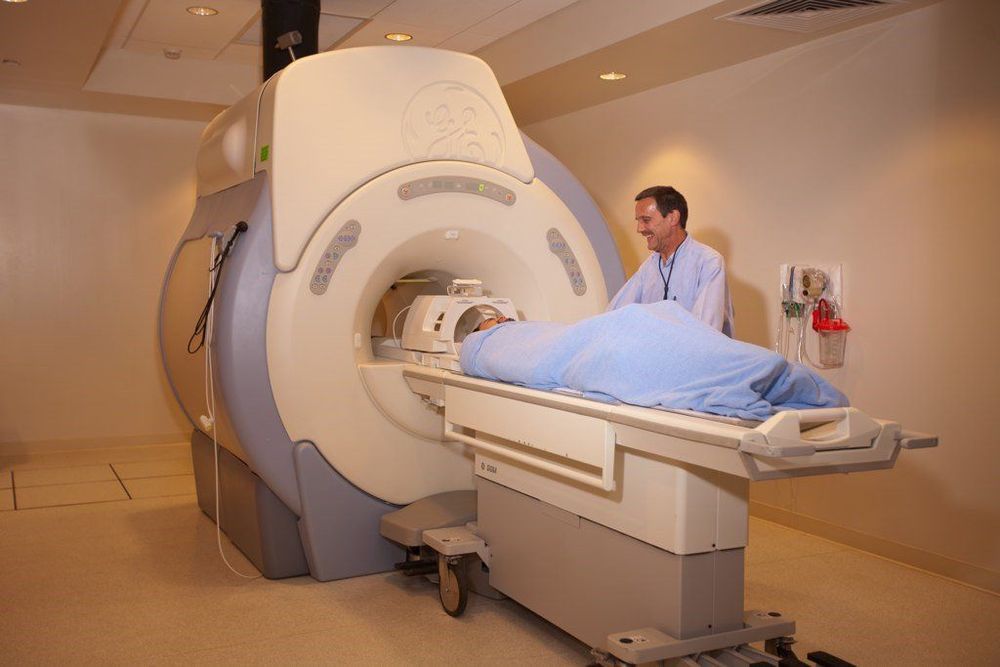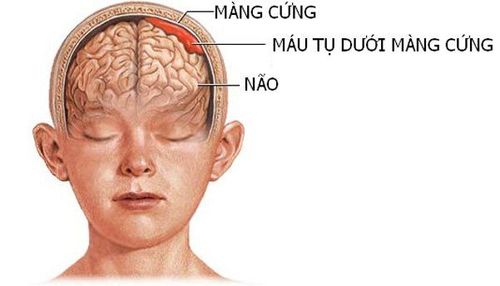This is an automatically translated article.
Subdural pustulosis can result from many causes such as mastoiditis or sinusitis, but in most cases it is due to the patient having a history of frontal sinusitis. This is a surgical emergency and is often indicated for neurosurgery intervention.1. What is subdural pus?
The subdural space is a space located between the inner surface of the arachnoid and the dura. This space is opened by a blood pooling under the dura or by a fluid pooling underneath the dura. These collections are caused by cerebrospinal fluid passing through a tear in the arachnoid membrane.Subdural pustules can be chronic or acute. This is a chronic disease when the incubation period has been at least 2 weeks. When this happens, the hematoma will change from a thick, oil-like clot to a yellow-brown fluid. In addition, there will be little fresh blood in this fluid because new blood is poured into the liquefied blood.
Then over time, the disease turns into a chronic subdural purulent pustule that produces a vascularized outer capsule that originates from the vascular tissue located on the inner surface of the dura, while the inner capsule is relatively absent. The appearance of blood vessels is derived from the arachnoid membrane. In addition, this capsular hematoma can be divided into different septa. Statistically, about 15-20% of patients with chronic subdural pus are bilateral.
2. Causes of subdural pus accumulation
Subdural pustules often occur under conditions associated with low intracranial pressure or an increased mobility of the brain within the capsular membranes. In such cases, it is easier for the subarachnoid space to open.In general, chronic subdural pustulosis is more likely to occur if there is diffuse or resident brain atrophy, these conditions are more common in the elderly or in alcoholics.
In addition to the main cause of sinusitis, subdural empyema can also be formed due to previous traumas with subdural hematoma and superinfection, or after surgery to open the skull, puncture the skull. Spinal stenosis, or a complication of meningitis , in all cases the brain will tend to be detached from the inner surface of the skull and reside where the veins may begin to become distended.
In addition, another rare cause of subdural pus is a metastatic brain tumor on the inner surface of the dura. And the risk of chronic subdural pustulosis is increased if there are clotting disorders such as anticoagulants, aspirin, coagulation-related diseases.
Patients with alcoholism can cause a dual effect of purulent subdural hematoma, due to the formation of brain atrophy and coagulation disorders at the same time due to liver diseases. In addition, elderly people are also prone to brain atrophy because they often use anticoagulants at a higher frequency than the general population.

Biến chứng bệnh viêm màng não gây tụ mủ dưới màng cứng
3. Indications and contraindications for subdural purulent surgery like?
Indicated in the following cases:When images from computed tomography or magnetic resonance imaging show a relatively thick subdural hematoma. There are focal neurological signs. The patient's consciousness gradually deteriorated over time. The pustule is increasing in size on the radiographs. Intracranial pressure gradually increases (range from above 20 mmHg). Contraindicated when:
The patient's condition has changed too badly: dilated magnetic field, Glasgow 3 points, septic or toxic shock,... Relative contraindications when the patient is very old or has disease systemic chronic, can be associated with cor pulmonale, kidney failure or heart failure,...

Chụp cộng hưởng từ cho thấy máu tụ dưới màng cứng
4. Surgical procedure for subdural pus collection
Before the surgery, the patient will be shaved and cleaned, the co-technician will check the medical record, the treatments performed, along with the tests done. then explain the details to the family and sign the consent form for the surgery.The surgical procedure is divided into 2 main steps, including:
Step 1: After anesthesia is performed, the patient's head will be fixed on the operating table and skull surgery will be performed. Step 2: Apply the usual methods and be done as soon as possible is to drill one hole, then drill two to three or more holes, and at the same time expand the drill holes or gnaw the skull and widen the skull. add a cross-shaped sclera to drain the pus by pumping water in from different directions. In this process, mannitol solution is infused before drilling to bring out the maximum effect. The patient is placed a drainage tube inside the localized pus, fixed to the skin and maintained for many days to inject antibiotics. Many cases will require a complete opening of a fairly large skull window in order to effectively drain the pus and the effect of the antibiotic injection is also better. The antibiotics used are usually strong, last for 8 weeks and are done at the same time as aggressive surgical treatment of osteomyelitis.
Note: during surgery, it is necessary to stop bleeding with electric knife or bipolar electrocautery. In addition, the meninges need to be sutured tightly, and if the meninges are stretched, the meninges can be repaired by meningeal suspension and temporal fascia.
Subdural pus-filled surgery is not a simple surgical emergency, it needs to be performed by highly skilled doctors. In particular, in the elderly, the clinical symptoms of chronic subdural pus are easily confused with diseases such as cerebrovascular accident, dementia,... Therefore, patients need to be carefully examined clinically, perform early imaging for diagnosis and surgical intervention in a timely manner.
Vinmec International General Hospital is one of the leading hospitals in Vietnam, always guaranteed for the professional quality of its medical team. The most modern equipment and technology system. Medical services are always comprehensive and professional.
Customers wishing to be examined at Vinmec International General Hospital can register for an examination at the nationwide Vinmec Hospital and Clinic system HERE.













